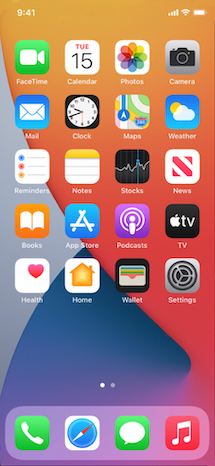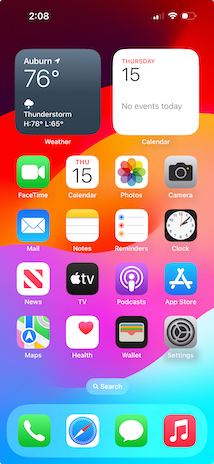
iOS is a mobile operating system developed by Apple Inc. exclusively for its smartphones. It was unveiled in January 2007 for the first-generation iPhone, launched in June 2007.
iOS is a mobile operating system developed by Apple Inc. and was first released as iPhone OS in June 2007, coinciding with the launch of the first generation iPhone. iPhone OS was renamed iOS following the release of the iPad, starting with iOS 4. With iOS 13, Apple began offering a separate operating system, iPadOS, for the iPad. iOS is also the foundation of the newer audioOS and tvOS, and shares some of its code with macOS. New iOS versions are released every year alongside new iPhone models. From its launch in 2007 until 2010, this occurred in June or July, since then, new major versions are released in September or October. Since the launch of the iPhone in June 2007, there have been 17 major releases of iOS. The current major version of iOS is iOS 17, released on September 18, 2023.
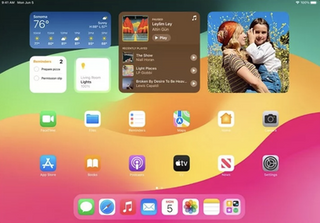
iPadOS is a mobile operating system developed by Apple Inc. for its iPad line of tablet computers. It was given a name distinct from iOS, the operating system used by Apple's iPhones to reflect the diverging features of the two product lines, such as multitasking. It was introduced as iPadOS 13 in 2019, reflecting its status as the successor to iOS 12 for the iPad, at the company's 2019 Worldwide Developers Conference.
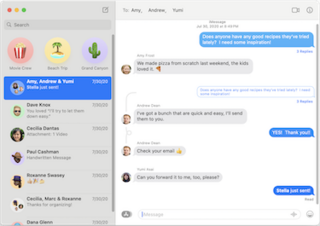
iMessage is an instant messaging service developed by Apple Inc. and launched in 2011. iMessage functions exclusively on Apple platforms – including macOS, iOS, iPadOS, and watchOS – as part of Apple's broader strategic approach to inter-device integration, sometimes referred to as the "Apple ecosystem".
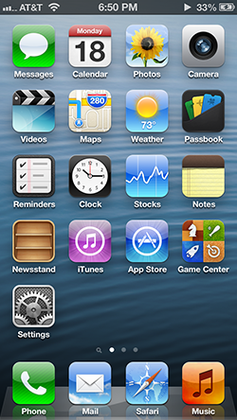
iOS 6 is the sixth major release of the iOS mobile operating system developed by Apple Inc, being the successor to iOS 5. It was announced at the company's Worldwide Developers Conference on June 11, 2012, and was released on September 19, 2012. It was succeeded by iOS 7 on September 18, 2013.

iOS 8 is the eighth major release of the iOS mobile operating system developed by Apple Inc., being the successor to iOS 7. It was announced at the company's Worldwide Developers Conference on June 2, 2014, and was released on September 17, 2014. It was succeeded by iOS 9 on September 16, 2015.

iOS 9 is the ninth major release of the iOS mobile operating system developed by Apple Inc., being the successor to iOS 8. It was announced at the company's Worldwide Developers Conference on June 8, 2015, and was released on September 16, 2015. It was succeeded by iOS 10 on September 13, 2016.

tvOS is an operating system developed by Apple Inc. for the Apple TV, a digital media player. In the first-generation Apple TV, Apple TV Software was based on Mac OS X. Starting with the second generation, the software is based on the iOS operating system and has many similar frameworks, technologies, and concepts.
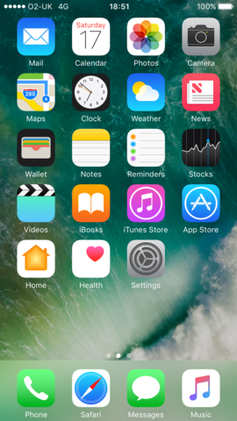
iOS 10 is the tenth major release of the iOS mobile operating system developed by Apple Inc., being the successor to iOS 9. It was announced at the company's Worldwide Developers Conference on June 13, 2016, and was released on September 13, that year. It was succeeded by iOS 11 on September 19, 2017.

Weather is a weather forecast app developed by Apple Inc., available on iOS since the release of the iPhone and iPhone OS 1 in 2007. It allows users to see the conditions, forecast, temperature, and other related metrics of the device's current location, as well as a number of other cities. A version of Weather is also available for watchOS; however, it is limited in functionality. Weather was made available on more devices across the Apple ecosystem with the releases of iPadOS 16 and macOS Ventura, where weather data from Apple was previously only available as a widget or through Siri.

iOS 11 is the eleventh major release of the iOS mobile operating system developed by Apple Inc., being the successor to iOS 10. It was announced at the company's Worldwide Developers Conference on June 5, 2017, and was released on September 19, 2017. It was succeeded by iOS 12 on September 17, 2018.

iOS 12 is the twelfth major release of the iOS mobile operating system developed by Apple Inc. Aesthetically similar to its predecessor, iOS 11, it focuses more on performance than on new features, quality improvements and security updates. Announced at the company's Worldwide Developers Conference on June 4, 2018, iOS 12 was released to the public on September 17, 2018. It was succeeded for the iPhone and iPod Touch by iOS 13 on September 19, 2019, and for the iPad by iPadOS 13 on September 24, 2019. Security updates for iOS 12 continued for four years after the releases of iOS 13 and iPadOS 13 for devices unable to run the newer versions. The last update, 12.5.7, was released on January 23, 2023.

iOS 13 is the thirteenth major release of the iOS mobile operating system developed by Apple Inc. for the iPhone, iPod Touch and HomePod. The successor to iOS 12, it was announced at the company's Worldwide Developers Conference (WWDC) on June 3, 2019, and released on September 19, 2019. It was succeeded by iOS 14, released on September 16, 2020.

iPadOS 13 is the first major release of the iPadOS mobile operating system developed by Apple Inc. for their iPad line of tablet computers. The successor to iOS 12 on those devices, it was announced at the company's 2019 Worldwide Developers Conference (WWDC) on June 3, 2019, as a derivation from iOS, with a greater emphasis on multitasking and tablet-centric features. It was released on September 24, 2019. It was succeeded by iPadOS 14, released on September 16, 2020.
iPadOS is a mobile operating system for tablet computers developed by Apple Inc. It was first released as a modification of iOS starting with version 13.1 on September 24, 2019. Before the release of iPadOS, iPads were released with iPhone OS, which was later renamed to iOS. New iPadOS versions are released every year mostly in sync with iOS, tvOS, and watchOS.
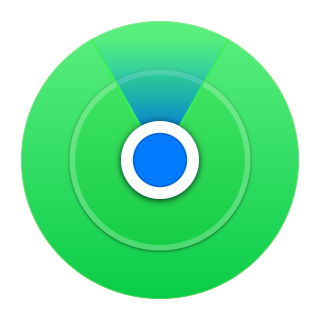
Find My is an asset tracking service made by Apple Inc. that enables users to track the location of iOS, iPadOS, macOS, watchOS devices, AirPods, AirTags and a number of supported third-party accessories through a connected iCloud account. Users can also share their GPS locations to others with Apple devices and view the location of others who choose to share their location. Find My was released alongside iOS 13 on September 19, 2019, merging the functions of the former Find My iPhone and Find My Friends into a single app. On watchOS, Find My is separated into three different applications: Find Devices, Find People and Find Items.

AirTag is a tracking device developed by Apple. AirTag is designed to act as a key finder, which helps people find personal objects. To locate lost items, AirTags use Apple's crowdsourced Find My network, estimated in early 2021 to consist of approximately one billion devices worldwide that detect and anonymously report emitted Bluetooth signals. AirTags are compatible with any iPhone, iPad, or iPod Touch device capable of running iOS/iPadOS 14.5 or later, including iPhone 6S or later. Using the built-in U1 chip on iPhone 11 or later, users can more precisely locate items using ultra-wideband (UWB) technology. AirTag was announced on April 20, 2021, made available for pre-order on April 23, and released on April 30.

iPadOS 14 is the second major release of the iPadOS operating system developed by Apple for their iPad line of tablet computers. It was announced on June 22, 2020 at the company's Worldwide Developers Conference (WWDC) as the successor to iPadOS 13, making it the second version of the iPadOS fork from iOS. It was released to the public on September 16, 2020. It was succeeded by iPadOS 15 on September 20, 2021.

iOS 15 is the fifteenth major release of the iOS mobile operating system developed by Apple for its iPhone and iPod Touch lines of products. It was announced at the company's Worldwide Developers Conference on June 7, 2021, as the successor to iOS 14 and released to the public on September 20, 2021.

